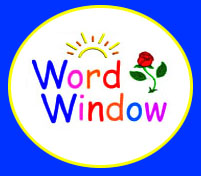 Dear Parents and Teachers,
The classes offer a group 'story-time' format just like at preschool, but add an easel for the teacher and writing-drawing tablets for the children.
This approach to learning influences a variety of areas:
Early Literacy - During our classes, we ask kids to write and draw each word ('cat', 'drum', or 'hat'). This method of learning allows the information to be encoded in two cognitive channels (as language and as an object). The result is a memory of diverse content, making it easier to recall. Why? Because the information is stored with more cognitive 'handles' that the child can use to retrieve it with. Learning becomes multi-dimensional, which we believe allows the child to more effectively recall and use the information.
3-Dimensional Drawing Skill - The program is designed to help kids create depth in their drawings, and this is accomplished in many cases by four-year olds. Simple 3-dimensional drawings of cans or hats allow kids to take a pretty big step up from drawing in 2-dimensions. As such, we believe it expands the child's overall ability to think. In professional intelligence tests such as the Stanford-Binet, there is a section that tests spatial awareness. This in part is the ability to imagine objects in motion and in 3-dimensional space. There is probably nothing we would like more than to help kids develop this ability. And so, we aim to do so by helping them learn to draw and imagine in 3-dimensions. Our hope is that an expanded imaginative spatial thinking ability will be useful someday in math, science, and art classes.
Writing and Fine Motor Development - Many of the hand and finger movements required to make letters are the same ones used in drawing. For example, the two long lines used to make a capital 'A' are also used in making a rocket or a sorcerer's hat. And waves on an ocean can be made by connecting a few slightly stretched out U's. Other examples are numerous. More importantly however, children with different learning styles (language-based, as with letters and words, or spatially, as with drawing) improve their finger dexterity and hand control by doing whichever style they enjoy best.
Right and Left Hemisphere Development - According to research on brain anatomy and physiology, each half, or hemisphere, of the human brain has specialized functions. For example, the left hemisphere processes language, like when children write letters or learn word definitions. On the other side, the right hemisphere handles art and creativity, as when children draw pictures. Thus when children learn how to write and draw the symbols of objects and ideas, they are exercising and contributing to the development of both hemispheres.
For more information, please call us: 477 299-7536
Hope to see you there!
|
